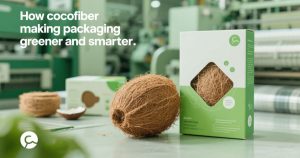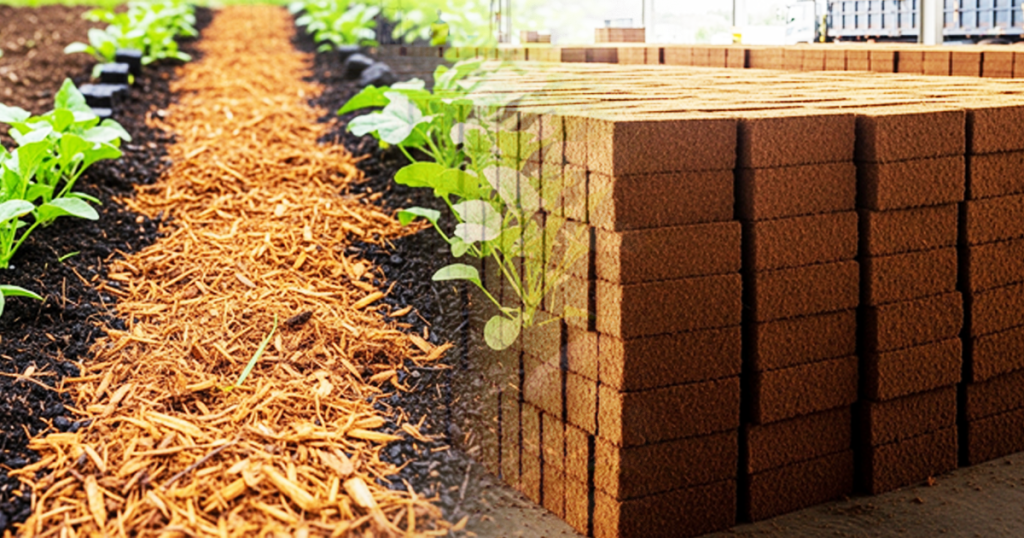A Sustainable Alternative Turning Rural Fortunes Around
In the heartlands of Southeast Asia, a quiet agricultural revolution is taking place. Cocopeat brick farming, once considered a byproduct disposal strategy, has evolved into a lucrative, eco-friendly industry that is changing the lives of smallholder farmers.
As a researcher specializing in cocopeat, I have witnessed firsthand how this fibrous material, derived from coconut husks, is now a goldmine for rural communities. What was once agricultural waste is now generating steady income while contributing to sustainable farming practices globally.
Cocopeat, known for its excellent water retention, aeration, and biodegradability, is increasingly used as a growing medium in horticulture. Farmers who once relied solely on seasonal crops are now integrating cocopeat brick production into their livelihoods. The results are transformative, both economically and environmentally.
Farmers Driving the Green Economy
During a field study in West Java, Indonesia, I met Suryanto, a farmer who transitioned from traditional rice farming to cocopeat brick production. “At first, I didn’t believe coconut waste could feed my family,” he shared.
“But now, I earn four times more than before, and I’m not dependent on the rainy season anymore.”
This shift is not isolated. Across India, Sri Lanka, and the Philippines, farmers are adopting cocopeat production with minimal machinery and training. With rising global demand—particularly from countries promoting hydroponic farming and organic cultivation—the price of cocopeat bricks has surged, creating a viable export market. What makes this model sustainable is its reliance on a renewable resource.
Coconuts are abundant in tropical regions, and the husks, once discarded, are now monetized. Small processing units, often family-run, crush and compress the peat into standardized bricks that are then dried, packed, and shipped globally. This shift reflects a growing awareness among farmers: sustainability can be profitable.
Research Validates the Trend
My lab tests confirm cocopeat’s superior performance compared to peat moss, which is often mined and thus less sustainable. Cocopeat exhibits high porosity and balanced pH levels, making it ideal for root development in a variety of crops. It decomposes slowly, offering long-term structural support in soil mixes, and can retain water up to eight times its weight. These qualities make it a favorite among horticulturists in water-scarce regions.
Our economic impact assessment in southern India revealed a 37% average increase in farmer incomes after adopting cocopeat brick production. Moreover, the initial setup costs are relatively low. A basic hydraulic press machine, which costs around $500, can produce up to 1,000 bricks daily with minimal manual labor.
Challenges in the Cocopeat Chain
Despite its benefits, cocopeat farming is not without hurdles. Quality control remains a major concern. Many small-scale producers lack the resources to meet international quality standards, particularly in terms of salt content and moisture levels. Additionally, inconsistent drying due to weather conditions can affect product durability and shelf life.
Exporters and researchers are now working together to develop decentralized quality control units and solar-powered dryers to standardize brick quality. Training initiatives are also being launched, teaching farmers best practices in fermentation, drying, and packaging.
Empowering Farmers Through Knowledge and Access
To further boost the sector, knowledge-sharing platforms have emerged, connecting farmers with buyers and researchers. Government support, particularly through subsidies and microfinancing, is also enabling new entrants to tap into this market. With adequate training, even women and youth groups are getting involved, creating an inclusive economic ecosystem.
In my opinion as a researcher, the future of cocopeat brick farming lies in scaling smartly while maintaining ecological integrity. When managed correctly, it off







